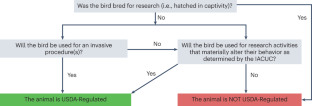组织人工智能技术部署能力中的自动化增强悖论实现经济效益和社会效益同步的实证研究
IF 6.4
3区 管理学
Q1 INFORMATION SCIENCE & LIBRARY SCIENCE
引用次数: 0
摘要
本研究的目的是了解机器学习(ML)和人工智能(AI)在组织中的应用同时带来的竞争和社会收益。关于机器学习和人工智能技术部署的贡献及其对组织和社会的影响,存在知识缺口。设计/方法/方法本研究基于动态能力(DC)和ML和AI自动化增强悖论文献。本研究使用239名印度组织首席技术官(cto)的回应来检验这些理论观点。采用偏最小二乘结构方程建模(PLS-SEM)路径建模进行数据分析。结果表明,机器学习和人工智能技术的组织使用对数据中心计划有积极影响。研究结果表明,数据中心完全介导了基于ML和ai的技术对企业绩效和社会绩效的影响。本研究对ML和AI技术的组织和社会结果之间的紧张关系的理论论述做出了贡献。该研究扩展了数据中心作为实现机器学习和人工智能使用的社会效益的重要战略的作用。在此基础上,探讨了自动化-增强悖论的理论张力。应用机器学习和人工智能技术的组织可以应用本研究的见解来理解组织惯例,以追求同时的竞争利益和社会收益。此外,组织的首席技术主管可以从数据中心的角度设计如何使用ML和AI技术来帮助解决自动化增强悖论的紧张关系。社会影响组织中ML和AI技术的使用增加了DC。它们可以带来积极的社会效益,例如创造新的就业机会、增加对熟练雇员的补偿以及更多的性别参与就业。这些见解可以从这项研究中得出。原创性/价值本研究是为数不多的实证调查之一,它提供了关于机器学习和人工智能在组织中使用的组织和社会效益的理论和实践见解,因为它们的DC。这项研究也是第一个在企业层面解决自动化-增强悖论的实证调查之一。本文章由计算机程序翻译,如有差异,请以英文原文为准。

Automation-augmentation paradox in organizational artificial intelligence technology deployment capabilities; an empirical investigation for achieving simultaneous economic and social benefits
PurposeThe purpose of this research study was to understand the simultaneous competitive and social gains of machine learning (ML) and artificial intelligence (AI) usage in organizations. There was a knowledge hiatus regarding the contribution of the deployment of ML and AI technologies and their effects on organizations and society.Design/methodology/approachThis study was grounded on the dynamic capabilities (DC) and ML and AI automation-augmentation paradox literature. This research study examined these theoretical perspectives using the response of 239 Indian organizational chief technology officers (CTOs). Partial least square-structural equation modeling (PLS-SEM) path modeling was applied for data analysis.FindingsThe results indicated that ML and AI technologies organizational usage positively influenced DC initiatives. The findings depicted that DC fully mediated ML and AI-based technologies' effects on firm performance and social performance.Research limitations/implicationsThis study contributed to theoretical discourse regarding the tension between organizational and social outcomes of ML and AI technologies. The study extended the role of DC as a vital strategy in achieving social benefits from ML and AI use. Furthermore, the theoretical tension of the automation-augmentation paradox was explored.Practical implicationsOrganizations deploying ML and AI technologies could apply this study's insights to comprehend the organizational routines to pursue simultaneous competitive benefits and social gains. Furthermore, chief technology executives of organizations could devise how ML and AI technologies usage from a DC perspective could help settle the tension of the automation-augmentation paradox.Social implicationsIncreased ML and AI technologies usage in organizations enhanced DC. They could lead to positive social benefits such as new job creation, increased compensation to skilled employees and greater gender participation in employment. These insights could be derived based on this research study.Originality/valueThis study was among the first few empirical investigations to provide theoretical and practical insights regarding the organizational and societal benefits of ML and AI usage in organizations because of their DC. This study was also one of the first empirical investigations that addressed the automation-augmentation paradox at the enterprise level.
求助全文
通过发布文献求助,成功后即可免费获取论文全文。
去求助
来源期刊
CiteScore
14.80
自引率
6.20%
发文量
30
期刊介绍:
The Journal of Enterprise Information Management (JEIM) is a significant contributor to the normative literature, offering both conceptual and practical insights supported by innovative discoveries that enrich the existing body of knowledge.
Within its pages, JEIM presents research findings sourced from globally renowned experts. These contributions encompass scholarly examinations of cutting-edge theories and practices originating from leading research institutions. Additionally, the journal features inputs from senior business executives and consultants, who share their insights gleaned from specific enterprise case studies. Through these reports, readers benefit from a comparative analysis of different environmental contexts, facilitating valuable learning experiences.
JEIM's distinctive blend of theoretical analysis and practical application fosters comprehensive discussions on commercial discoveries. This approach enhances the audience's comprehension of contemporary, applied, and rigorous information management practices, which extend across entire enterprises and their intricate supply chains.

 求助内容:
求助内容: 应助结果提醒方式:
应助结果提醒方式:


